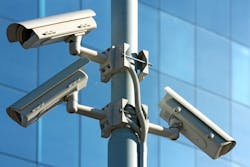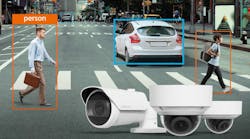According to a new report from The Freedonia Group, demand for electronic security products in the U.S. is projected to rise 7 percent annually through 2019 to $16.2 billion.
In a statement, the research firm said that the strengthening of new construction expenditures following the recession-impacted 2009-14 period is expected to drive gains. Additionally, a heightened perceived risk of crime due to widespread media coverage will also support gains, even as the actual number of crimes has declined in recent years. Technological advances will promote sales gains in all segments, both by providing a boost to value demand via the incorporation of value-added features and by increasing market penetration.
Demand for video surveillance products and systems designed for use in security-related settings will advance 8.2 percent annually, the fastest growth of the five primary electronic security product categories. In 2014, there were approximately 35 million total video surveillance security cameras installed and in use in the United States. The research firm said that number will continue to expand for the foreseeable future as market penetration increases and as locations add more cameras to their existing surveillance systems.
Access control systems will see strong gains as smart card-based systems gain traction over less secure technologies such as proximity and magnetic stripe cards. Access control systems that integrate increasingly advanced layers of credentials, such as mobile phones and biometrics, will support further gains. Rising consumer familiarity with biometric systems, driven by the use of biometric technologies in identification applications, will help promote demand for the small but rapidly growing biometric access control segment. Improvements in reliability and efficiency of biometric devices, coupled with falling prices, will further aid adoption.
Interoperability as well as innovations in mobile monitoring will boost demand for alarms, which accounted for the largest share of sales in 2014.
"The increasing array of plug-and-play electronic security devices that are self-monitored will expand the potential market base of consumers willing to purchase supplemental security measures," said analyst Katherine Brink. "These smart products are controlled and accessed via mobile devices, aiding security equipment sales as interest in smart home automation systems also rises." The alarm segment will further benefit from innovations in personal emergency response service (PERS) alarms.”
For more information, visit http://www.freedoniagroup.com/.


